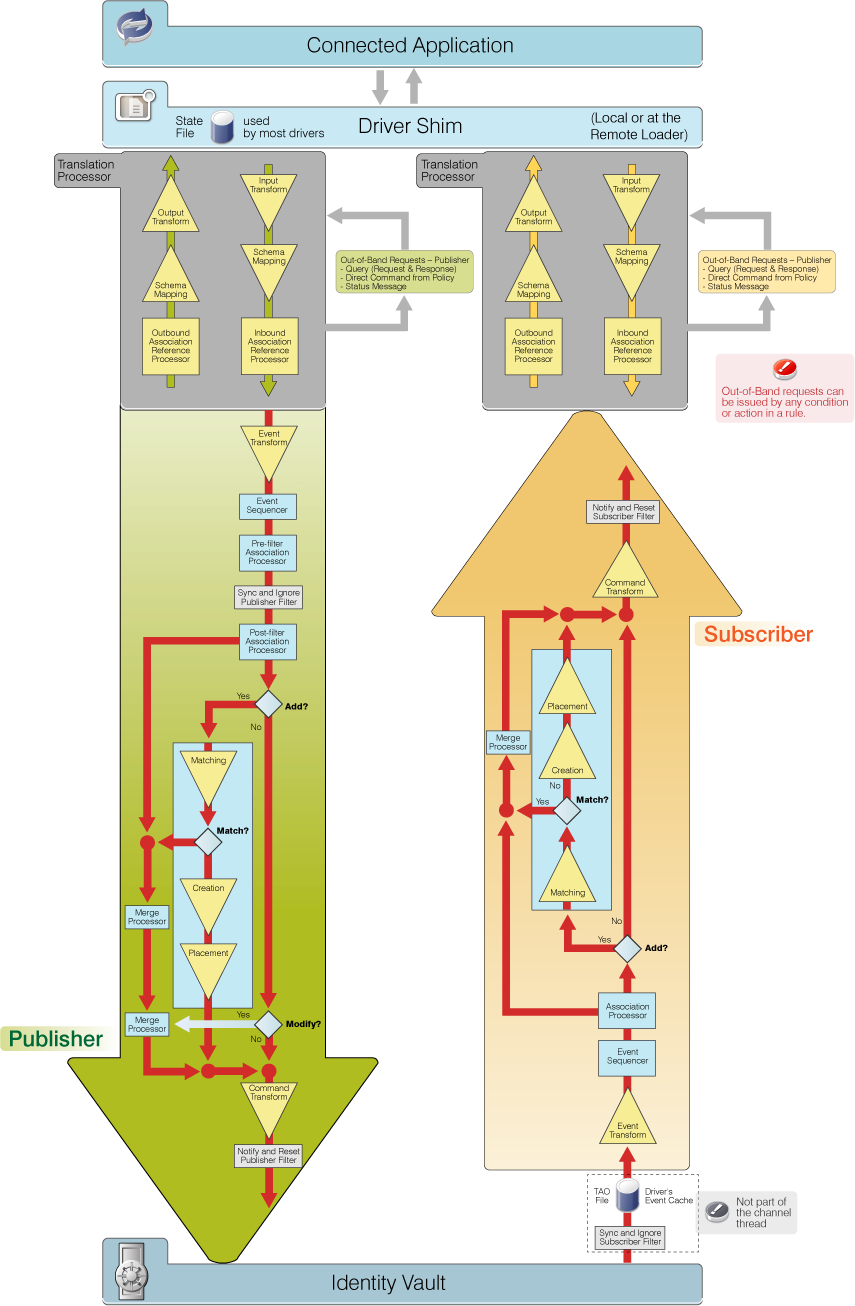6.1 The Identity Vault
The Identity Vault is a repository of identity information. It is also called the Novell eDirectory tree. The Identity Vault stores information specific to Identity Manager, such as driver configurations, parameters, and policies.
The Identity Vault has an extensive schema which may be customized. The Identity Vault can be viewed narrowly as a private data store for Identity Manager or more broadly as a metadirectory that holds enterprise-wide data, that you want to synchronize amongst applications including various directories, databases, phone systems, operating systems, and Human Resource systems. The data in the vault is available to any protocol supported by eDirectory, including NCP (NetWare Core Protocol), LDAP, and DSML. Identity Manager eases the administrative efforts of large enterprises by preventing administrative effort duplication. For example, data synchronized from a PeopleSoft system to Lotus Notes is first added to the Identity Vault and then sent to the Lotus Notes system.A typical Identity Manager environment has an Identity Vault at the center with other applications connected to it. The Identity Manager architecture can be thought of as multiple one-to-one relationships or a hub-and-spoke relationship. Each individual relationship is between the Identity Manager, Identity Vault, and a specific connected application.
Figure 6-1 Fishbone Diagram

A driver is an application shim combined with policies that allows Identity Manager to communicate with an external application in order to synchronize data between the application and the Identity Vault. Note that the term driver and shim are interchangeable. In Figure 6-1, the shim is located at the top, linked to an external application and the Identity Vault. Between the driver shim and the Identity Vault are the rules which manage the data.
Data flows through an Identity Manager system in the form of XML documents. Identity Manager has a vocabulary of XML named XDS which is used to represent the state of objects and data operations with the corresponding attribute values.
The Identity Manager engine uses the shim to deliver and consume information with a connected system. It uses the driver configuration rules to decide how and what to do.
Drivers connect to the applications in order to manage objects and entities. A driver has two basic responsibilities:
-
Report data changes (events) in the application to the Identity Manager engine.
-
Carry out data changes (commands) submitted by the Identity Manager engine to the application.
The combination of a connected system driver, application connection information, and a set of policies is referred to as a driver configuration. Driver configurations are stored in a set of directory objects in the Identity Vault. The DirXML-Driver object contains other objects that define the policies and parameters associated with the configuration.
The driver configuration defines a data pipeline between a connected system and the Identity Vault. The driver configuration defines what might be synchronized and how to map eDirectory schema to a connected system schema or metadata. For example, in an HR application, a user’s first name might be referred to as First Name and Given Name in the Identity Vault. In the namespace of the connected system, you refer First Name, but in the name space of the Identity Vault you refer Given Name. In Identity Manager, most of the time you work with the attribute names in the Identity Vault namespace.
A relationship is established between an Identity Vault object and an connected system object when the two objects represent the same entity. This relationship is called an association and is stored in the Identity Vault on the associated Identity Vault object. The association establishes a relationship between the Identity Vault object and the object in the connected system. Key values that uniquely identify objects in connected systems include Global Unique Identifiers (GUIDs), DNs, primary keys in databases, and so on. Each driver is coded to use a specific key.